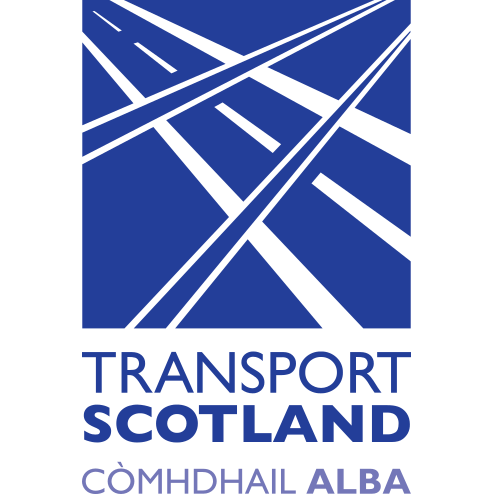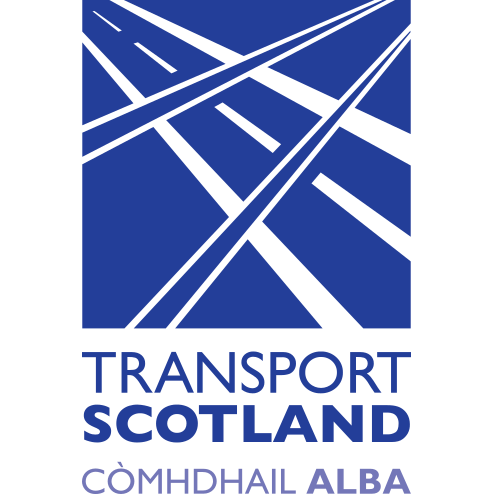Design Manual for Roads and Bridges




Pavement
Design
CD 236 Surface course materials for construction
(formerly CD 236 (rev. 3 inc. HD 36/06 and IAN 156/16), HD 37/99, HD 38/16, IAN 157/11, TA 81/16)
Version 4.1.0
Summary
This document provides requirements for pavement surfacing for both flexible and rigid pavements
National Variation
This document has associated National Application Annexes providing alternative or supplementary content to that given in the core document, which is relevant to specific Overseeing Organisations. National Application Annexes are adjoined at the end of this document.
Feedback and Enquiries
Users of this document are encouraged to raise any enquiries and/or provide feedback on the content and usage of this document to the dedicated National Highways team. The online feedback form for all enquiries and feedback can be accessed at: www.standardsforhighways.co.uk/feedback.
This is a controlled document.Latest release notes
| Document Code | Version number | Date of publication of relevant change | Changes made to | Type of change |
|---|---|---|---|---|
| CD 236 | 4.1.0 | December 2022 | Core document, England NAA, Scotland NAA, Wales NAA | Incremental change to requirements |
| Revision 4.1.0 (Published Dec. 2022) removes a duplicate requirement relating to the use of visually contrasting surfaces on central reservations. This topic is covered by CD 127. |
||||
Previous versions
| Document Code | Version number | Date of publication of relevant change | Changes made to | Type of change |
|---|---|---|---|---|
| CD 236 | 4.0.1 | July 2021 | Core document, Wales NAA | Incremental change to notes and editorial updates |
| CD 236 | 4 | March 2020 |
Foreword
Publishing information
This document is published by National Highways.
This document supersedes HD 36/06, HD 37/99, HD 38/16, IAN 156/16, IAN 157/11 and TA 81/16 which are withdrawn.
Contractual and legal considerations
This document forms part of the works specification. It does not purport to include all the necessary provisions of a contract. Users are responsible for applying all appropriate documents applicable to their contract.
Introduction
Background
The appropriate choice of surface course material plays a key role in providing roads that are safe, meet the needs of the user and offer good value for money. Permitted surface course materials and guidance on their selection are presented in this document.
In dry conditions all clean, surfaced roads have a high skidding resistance. However in wet conditions the skidding resistance is reduced. Using aggregates with an appropriate resistance to polishing for a particular site and traffic loading should result in a surfacing giving wet skidding resistance above the appropriate investigatory level (IL) assigned in accordance with CS 228 [Ref 7.N].
Assumptions made in the preparation of this document
The assumptions made in GG 101 [Ref 3.N] apply to this document.
Abbreviations
| Abbreviation | Definition |
|---|---|
| AADF | Annual average daily flow (1-direction) |
| AAV | Aggregate abrasion value |
| CAUTS | Cold applied ultra-thin surfacing |
| CSC | Characteristic skid coefficient |
| EAC | Exposed aggregate concrete |
| HFS | High friction surfacing |
| HRA | Hot rolled asphalt |
| IL | Investigatory level |
| PSV | Polished stone value |
| TSCS | Thin surface course system |
Terms and definitions
| Term | Definition |
|---|---|
| Departure | Variation or waiving of a requirement carried out in accordance with the Overseeing Organisation’s procedures. |
| High friction surfacing | Specialised high friction surfacing conforming to Clause 924 of the Specification for Highway Works MCHW Series 0900 [Ref 5.N]. |
| Thin surface course systems | Thin surface course systems conforming to Clause 942 of the Specification for Highway Works MCHW Series 0900 [Ref 5.N]. |
1. Scope
Aspects covered
1.1 This document shall be applied to surface course materials for new and maintenance construction on both flexible and rigid pavements.
NOTE 1 This document gives requirements for aggregates in surface course materials, which aim to ensure that appropriate skidding resistance is provided on roads.
NOTE 2 Additional requirements for aggregates used in pavement construction can be found in the Specification (MCHW1) MCHW Series 0700 [Ref 6.N], MCHW Series 0900 [Ref 5.N] and MCHW Series 1000 [Ref 4.N] together with the Notes for Guidance MCHW Series NG 0700 [Ref 4.I], MCHW Series NG 0900 [Ref 5.I] and MCHW Series NG 1000 [Ref 3.I].
NOTE 3 Detailed information on maintenance of asphalt and concrete roads can be found in CM 231 [Ref 6.I] and CD 227 [Ref 1.I].
NOTE 4 This document does not cover the requirements for footways and cycleways, which can be found in CD 239 [Ref 2.I].
1.2 This document shall be read in conjunction with 'Skidding resistance' CS 228 [Ref 7.N].
Implementation
1.3 This document shall be implemented forthwith on all schemes involving design of road pavement surface on the Overseeing Organisations’ motorway and all-purpose trunk roads according to the implementation requirements of GG 101 [Ref 3.N].
Use of GG 101
1.4 The requirements contained in GG 101 [Ref 3.N] shall be followed in respect of activities covered by this document.
2. Surface course material options
2.1 The specific requirements for surface course material options shall apply as provided in the National Application Annexes.
3. Aggregate selection
Polished stone value (PSV) and aggregate abrasion value (AAV)
3.1 The aggregates used in pavement quality concrete complying with Clause 1026 of the Specification MCHW Series 1000 [Ref 4.N] shall be exempt from the requirements of Section 3 of this document.
3.2 Coarse aggregates or chippings shall undergo polished stone value (PSV) testing in accordance with BS EN 1097-8 [Ref 8.N] to determine the resistance to polishing under the action of traffic.
3.3 For all roads, PSV shall be selected from the rows of Table 3.3a or Table 3.3b for the relevant material type, and corresponding site category and traffic level.
| Site category | Site description | Default | IL | PSV required for given IL, traffic level and type of site | |||||||||
|---|---|---|---|---|---|---|---|---|---|---|---|---|---|
| Traffic (cv/lane/day) at design life | |||||||||||||
| 1 - 250 | 251 - 500 | 501 - 750 | 751 - 1000 | 1001 - 2000 | 2001 - 3000 | 3001 - 4000 | 4001 - 5000 | 5001 - 6000 | Over 6000 | ||||
| A | Motorway | 0.30 | 50 | 50 | 50 | 50 | 50 | 55 | 55 | 60 | 65 | 65 | |
| * | 0.35 | 50 | 50 | 50 | 50 | 50 | 60 | 60 | 60 | 65 | 65 | ||
| B | Non-event carriageway with one-way traffic |
0.30 | 50 | 50 | 50 | 50 | 50 | 55 | 55 | 60 | 65 | 65 | |
| * | 0.35 | 50 | 50 | 50 | 50 | 50 | 60 | 60 | 60 | 65 | 65 | ||
| 0.40 | 50 | 50 | 50 | 55 | 60 | 65 | 65 | 65 | 65 | 68+ | |||
| C | Non-event carriageway with two-way traffic |
0.35 | 50 | 50 | 50 | 55 | 55 | 60 | 60 | 65 | 65 | 65 | |
| * | 0.40 | 55 | 60 | 60 | 65 | 65 | 68+ | 68+ | 68+ | 68+ | 68+ | ||
| 0.45 | 60 | 60 | 65 | 65 | 68+ | 68+ | 68+ | 68+ | 68+ | 68+ | |||
| Q | Approaches to and across minor and major junctions; approaches to roundabouts and traffic signals |
* | 0.45 | 60 | 65 | 65 | 68+ | 68+ | 68+ | 68+ | 68+ | 68+ | HFS |
| 0.50 | 65 | 65 | 65 | 68+ | 68+ | 68+ | HFS | HFS | HFS | HFS | |||
| 0.55 | 68+ | 68+ | HFS | HFS | HFS | HFS | HFS | HFS | HFS | HFS | |||
| K | Approaches to pedestrian crossings and other high risk situations |
* | 0.50 | 65 | 65 | 65 | 68+ | 68+ | 68+ | HFS | HFS | HFS | HFS |
| 0.55 | 68+ | 68+ | HFS | HFS | HFS | HFS | HFS | HFS | HFS | HFS | |||
| R | Roundabout | * | 0.45 | 50 | 55 | 60 | 60 | 65 | 65 | 68+ | 68+ | 68+ | 68+ |
| 0.50 | 68+ | 68+ | 68+ | 68+ | 68+ | 68+ | 68+ | 68+ | 68+ | 68+ | |||
| G1 | Gradients 5-10% longer than 50 m | * | 0.45 | 55 | 60 | 60 | 65 | 65 | 68+ | 68+ | 68+ | 68+ | 68+ |
| 0.50 | 60 | 68+ | 68+ | HFS | HFS | HFS | HFS | HFS | HFS | HFS | |||
| G2 | Gradient >10% longer than 50 m | 0.45 | 55 | 60 | 60 | 65 | 65 | 68+ | 68+ | 68+ | 68+ | 68+ | |
| * | 0.50 | 60 | 68+ | 68+ | HFS | HFS | HFS | HFS | HFS | HFS | HFS | ||
| 0.55 | 68+ | HFS | HFS | HFS | HFS | HFS | HFS | HFS | HFS | HFS | |||
| S1 | Bends radius <500 m – carriageway with one-way traffic |
* | 0.45 | 50 | 55 | 60 | 60 | 65 | 65 | 68+ | 68+ | HFS | HFS |
| 0.50 | 68+ | 68+ | 68+ | HFS | HFS | HFS | HFS | HFS | HFS | HFS | |||
| S2 | Bends radius <500 m – carriageway with two-way traffic |
0.45 | 50 | 55 | 60 | 60 | 65 | 65 | 68+ | 68+ | HFS | HFS | |
| * | 0.50 | 68+ | 68+ | 68+ | HFS | HFS | HFS | HFS | HFS | HFS | HFS | ||
| 0.55 | HFS | HFS | HFS | HFS | HFS | HFS | HFS | HFS | HFS | HFS | |||
| Site category | Site description | Default | IL | PSV required for given IL, traffic level and type of site | |||||||||
|---|---|---|---|---|---|---|---|---|---|---|---|---|---|
| Traffic (cv/lane/day) at design life | |||||||||||||
| 1-250 | 251- 500 | 501- 750 | 751- 1000 | 1001- 2000 | 2001- 3000 | 3001- 4000 | 4001- 5000 | 5001- 6000 | Over 6000 | ||||
| A | Motorway | 0.30 | 50 | 50 | 50 | 50 | 50 | 50 | 50 | 53 | 63 | 63 | |
| * | 0.35 | 50 | 50 | 50 | 50 | 50 | 53 | 53 | 53 | 63 | 63 | ||
| B | Non-event carriageway with one-way traffic |
0.30 | 50 | 50 | 50 | 50 | 50 | 50 | 50 | 53 | 63 | 63 | |
| * | 0.35 | 50 | 50 | 50 | 50 | 50 | 53 | 53 | 53 | 63 | 63 | ||
| 0.40 | 50 | 50 | 50 | 50 | 53 | 58 | 58 | 58 | 63 | 68+ | |||
| C | Non-event carriageway with two-way traffic |
0.35 | 50 | 50 | 50 | 50 | 50 | 53 | 53 | 58 | 63 | 63 | |
| * | 0.40 | 50 | 53 | 53 | 58 | 58 | 63 | 63 | 63 | 68+ | 68+ | ||
| 0.45 | 53 | 53 | 58 | 58 | 63 | 63 | 63 | 63 | 68+ | 68+ | |||
| Q | Approaches to and across minor and major junctions, approaches to roundabouts and traffic signals |
* | 0.45 | 60 | 65 | 65 | 68+ | 68+ | 68+ | 68+ | 68+ | 68+ | HFS |
| 0.50 | 65 | 65 | 65 | 68+ | 68+ | 68+ | HFS | HFS | HFS | HFS | |||
| 0.55 | 68+ | 68+ | HFS | HFS | HFS | HFS | HFS | HFS | HFS | HFS | |||
| K | Approaches to pedestrian crossings and other high risk situations |
* | 0.50 | 65 | 65 | 65 | 68+ | 68+ | 68+ | HFS | HFS | HFS | HFS |
| 0.55 | 68+ | 68+ | HFS | HFS | HFS | HFS | HFS | HFS | HFS | HFS | |||
| R | Roundabout | * | 0.45 | 50 | 55 | 60 | 60 | 65 | 65 | 68+ | 68+ | 68+ | 68+ |
| 0.50 | 68+ | 68+ | 68+ | 68+ | 68+ | 68+ | 68+ | 68+ | 68+ | 68+ | |||
| G1 | Gradients 5-10% longer than 50 m | 0.45 | 55 | 60 | 60 | 65 | 65 | 68+ | 68+ | 68+ | 68+ | 68+ | |
| * | 0.50 | 60 | 68+ | 68+ | HFS | HFS | HFS | HFS | HFS | HFS | HFS | ||
| G2 | Gradient >10% longer than 50 m | 0.45 | 55 | 60 | 60 | 65 | 65 | 68+ | 68+ | 68+ | 68+ | 68+ | |
| * | 0.50 | 60 | 68+ | 68+ | HFS | HFS | HFS | HFS | HFS | HFS | HFS | ||
| 0.55 | 68+ | HFS | HFS | HFS | HFS | HFS | HFS | HFS | HFS | HFS | |||
| S1 | Bends radius <500 m – carriageway with one-way traffic | * | 0.45 | 50 | 55 | 60 | 60 | 65 | 65 | 68+ | 68+ | HFS | HFS |
| 0.50 | 68+ | 68+ | 68+ | HFS | HFS | HFS | HFS | HFS | HFS | HFS | |||
| S2 | Bends radius <500 m – carriageway with two-way traffic | 0.45 | 50 | 55 | 60 | 60 | 65 | 65 | 68+ | 68+ | HFS | HFS | |
| * | 0.50 | 68+ | 68+ | 68+ | HFS | HFS | HFS | HFS | HFS | HFS | HFS | ||
| 0.55 | HFS | HFS | HFS | HFS | HFS | HFS | HFS | HFS | HFS | HFS | |||
3.3.1 PSV should be selected from those rows marked with a * in the default column of Table 3.3a or Table 3.3b.
NOTE 1 Table 3.3a applies to all types of surface course materials with the exception of Clause 942 thin surface course systems (TSCS), Clause 942TS (Stone Mastic Asphalt Surface Course (TS2010), Clause 942WG (Welsh Government Procedure W2F and Advice Guidance (PAG) 112/20 – Stone Mastic Asphalt Specification) and Clause 1026 (pavement quality concrete). Table 3.3b is applicable to Clause 942 TSCS only
NOTE 2 There is no PSV requirement for the aggregate used in clause 1026 materials (pavement quality concrete) , Clause 942TS (Stone Mastic Asphalt Surface Course (TS2010)) and), Clause 942WG (Welsh Government Procedure W2F and Advice Guidance (PAG) 112/20 – Stone Mastic Asphalt Specification) .
NOTE 3 Surfacing material containing a high proportion of calcined bauxite and 68+ psv natural aggregate blend in the mix can offer a similar skid resistance performance and durability to that provided by HFS in some of the site category and investigatory level combinations in table 3.3b.
3.4 The appropriate PSVs taken from Table 3.3a or Table 3.3b and AAVs from Table 3.10 shall be inserted in Appendix 7/1 of the Specification MCHW Series 0700 [Ref 6.N].
3.5 For all roads the justification for selecting PSV from rows other than those marked with a * in the default column of Table 3.3a or Table 3.3b shall be recorded.
NOTE 1 The default column * marked rows in Table 3.3a or Table 3.3b indicate the levels of PSV appropriate to the lowest CSC 'ST' marked cell in Table 4.1 (Site categories and investigatory levels) of CS 228 [Ref 7.N] .
NOTE 2 Aggregates with a lower PSV than indicated in Table 3.3a or Table 3.3b can be proposed if evidence is available that the aggregate has achieved the required life, skid resistance and skidding accident rate on a road of similar geometry, traffic volume and meteorological conditions.
3.6 Where ’68+’ material is listed in Table 3.3a or Table 3.3b, none of the three most recent results from consecutive PSV tests relating to the aggregate to be supplied shall fall below 68.
3.7 Basic oxygen steel slag complying with the chemical composition in Table 3.7 shall be classified as equivalent to PSV60 aggregate up to and including 5,000 cv/lane/day traffic at design life in site categories A, B and C when used in a TCSC complying with Clause 942 of the Specification MCHW Series NG 0900 [Ref 5.I].
| Chemical | Percentage by mass (%) |
|---|---|
| Fe2O3 | 20-30 |
| CaO | 40-50 |
| SiO2 | 10-51 |
| MgO | 4-10 |
Site category and investigatory level
3.8 The site category and investigatory level to be used in Table 3.3a or Table 3.3b shall be those which have been allocated to the specific site on which the material is to be laid.
3.9 Site category and investigatory level shall be determined by following the procedures in CS 228 [Ref 7.N].
Aggregate abrasion value
3.10 The AAV for the coarse aggregate shall be selected from Table 3.10, based on the relevant site categories and traffic levels.
| Traffic (cv/lane/day) at design life | ≤ 250 | 251 - 1000 | 1001 - 1750 | 1751 - 2500 | 2501 - 3250 | >3250 |
| Max. AAV for chippings for hot rolled asphalt, surface dressing and for aggregate in slurry and microsurfacing systems | 14 | 12 | 12 | 10 | 10 | 10 |
| Max. AAV for aggregate in thin surface course systems, CAUTS, exposed aggregate concrete surfacing and asphalt concrete surface course | 16 | 16 | 14 | 14 | 12 | 12 |
| Note: The maximum AAV requirement for porous asphalt is specified in Clause 938 of the Specification ( MCHW Series 0900 [Ref 5.N]). | ||||||
NOTE The aggregate abrasion value (AAV) of the coarse aggregate or chippings is determined in accordance with Annex A BS EN 1097-8 [Ref 8.N] having regard to the durability or resistance of the aggregate to abrasion under the action of traffic.
3.11 Limestone aggregates shall not be specified as the coarse aggregate or chippings in surface courses as noted in PD 6691 [Ref 2.N].
Traffic flow
3.12 The traffic flow used to determine the PSV and AAV for a particular surfacing shall be the design traffic as commercial vehicles per lane per day (cv/lane/day) based on the annual average daily flow (AADF) predicted to be using the lane at the end of the anticipated life of the surfacing.
NOTE Information on traffic flow can be found in CD 224 [Ref 7.I].
3.13 For maintenance schemes where classified traffic counts are not generally available and automatic counters are used for vehicle counts, the number of commercial vehicles per lane shall be regarded as equivalent to the number of vehicles >6.6 m in length.
3.14 For new construction and complete carriageway resurfacing, the level of PSV chosen shall reflect the design traffic flows for each individual lane.
3.15 Where a single lane is being resurfaced for maintenance purposes the appropriate PSV and AAV shall be used for that lane.
NOTE The PSVs and AAVs chosen need not match the values of existing adjacent surfacing.
3.16 For lanes with a design traffic of zero commercial vehicles the minimum PSV for surface coarse aggregates shall be 50.
3.17 Where the traffic flow on motorways within site category A exceeds 6,000 commercial vehicles per day, the specified PSV for surface coarse aggregates shall not exceed those specified in Table 3.3a or Table 3.3b.
Gyratory junctions
3.18 A maximum nominal aggregate size of 10 mm shall be specified in a thin surface course system on the circulatory part of a roundabout or other gyratory junctions or other highly stressed sites.
High friction surfacing (HFS)
3.19 High friction surfacing (HFS) shall not be specified on the circulatory parts of roundabouts, even if traffic signal controlled.
3.20 HFS shall not be specified solely because a coloured road surface is required.
Coloured surfacing
3.21 Any requirements for the use of coloured surfacing as determined in CD 127 [Ref 1.N] shall use materials provided in the National Application Annexes.
4. Normative references
The following documents, in whole or in part, are normative references for this document and are indispensable for its application. For dated references, only the edition cited applies. For undated references, the latest edition of the referenced document (including any amendments) applies.
| Ref. | Document |
|---|---|
| Ref 1.N | National Highways. CD 127, 'Cross-sections and headrooms' |
| Ref 2.N | BSI. PD 6691, 'Guidance on the use of BS EN 13108, Bituminous mixtures. Material specifications' |
| Ref 3.N | National Highways. GG 101, 'Introduction to the Design Manual for Roads and Bridges' |
| Ref 4.N | Highways England. MCHW Series 1000, 'Manual of Contract Documents for Highway Works. Volume 1 - Specification for Highway Works. Series 1000 Road Pavements – Concrete Materials' |
| Ref 5.N | Highways England. MCHW Series 0900, 'Manual of Contract Documents for Highway Works. Volume 1 Specification for Highway Works. Series 900 Road Pavements – Bituminous Bound Materials.' |
| Ref 6.N | Highways England. MCHW Series 0700, 'Manual of Contract Documents for Highways Works, Volume 1 Specification for Highways Works, Series 700 Road Pavements - General' |
| Ref 7.N | National Highways. CS 228, 'Skidding resistance' |
| Ref 8.N | BSI. BS EN 1097-8, 'Tests for mechanical and physical properties of aggregates - Determination of the Polished Stone Value (PSV)' |
5. Informative references
The following documents are informative references for this document and provide supporting information.
| Ref. | Document |
|---|---|
| Ref 1.I | National Highways. CD 227, 'Design for pavement maintenance' |
| Ref 2.I | National Highways. CD 239, 'Footway and cycleway pavement design' |
| Ref 3.I | Highways England. MCHW Series NG 1000, 'Manual of Contract Documents for Highway Works. Volume 2 - Notes for Guidance on the Specification for Highway Works. Series NG 1000 Road Pavements – Concrete Materials.' |
| Ref 4.I | Highways England. MCHW Series NG 0700, 'Manual of Contract Documents for Highway Works. Volume 2 - Notes for Guidance on the Specification for Highway Works. Series NG 700 Road Pavements - General' |
| Ref 5.I | Highways England. MCHW Series NG 0900, 'Manual of Contract Documents for Highway Works. Volume 2 - Notes for Guidance on the Specification for Highway Works. Series NG 900 Road Pavements – Bituminous Bound Materials.' |
| Ref 6.I | National Highways. CM 231, 'Pavement surface repairs' |
| Ref 7.I | National Highways. CD 224, 'Traffic assessment' |



